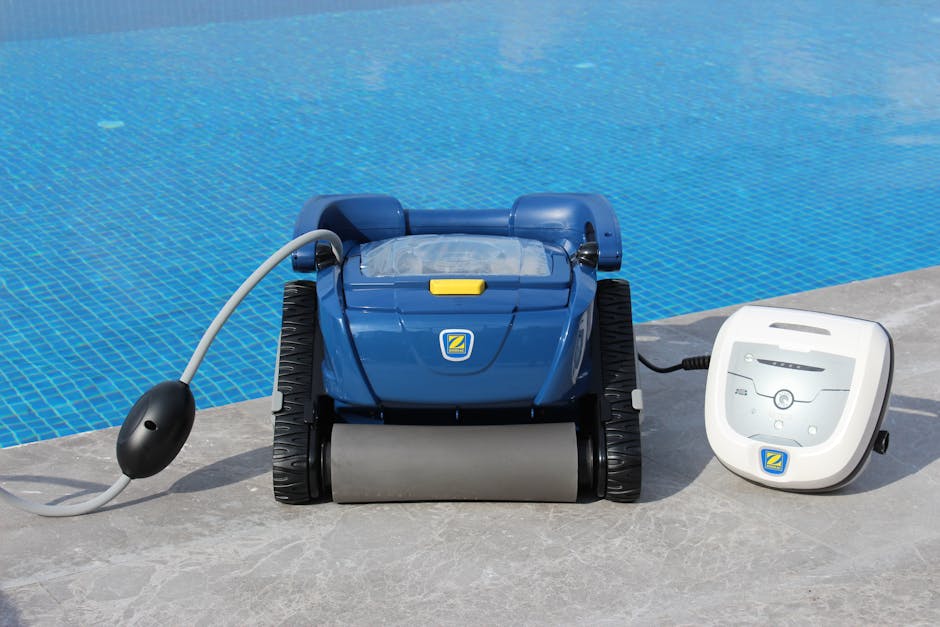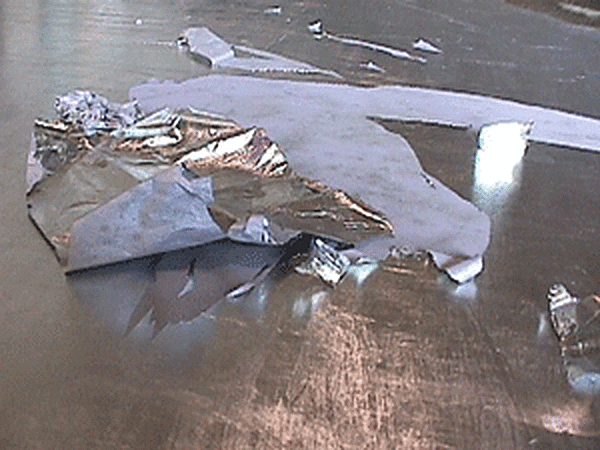Welcome to the world of pool resurfacing! When it comes to giving your pool a fresh and inviting look, having the right equipment and tools is essential. In this article, we will explore the must-have items for pool resurfacing. So, let’s dive in and discover what you need!
First things first, understanding the importance of pool resurfacing is key. Over time, the surface of your pool can become worn out, stained, or even cracked. That’s where resurfacing comes into play, reviving your pool’s appearance and ensuring its longevity. From brushes and scrapers to plaster mixers and power washers, there’s a wide range of equipment and tools available to make the resurfacing process a breeze.
Now, let’s talk about the different types of equipment and tools you should consider. Whether you’re tackling a DIY project or hiring a professional, having the right gear can make all the difference. Think about items like safety goggles, masks, and gloves to protect yourself during the resurfacing process. Additionally, you’ll need a power washer to clean the pool surface, a pool brush for scrubbing, and a plaster mixer for preparing the resurfacing material.
So, whether you’re a pool owner looking to spruce up your pool or a professional in the industry, having the right pool resurfacing equipment and tools is essential. In the following sections, we’ll delve deeper into each item, providing you with all the information you need to make the best choices for your project. Get ready to transform your pool and create a refreshing oasis right in your own backyard!
1. Pressure washer: Blast away dirt and grime from the pool surface.
2. Pool resurfacing materials: Choose between plaster, pebble, or tile finish.
3. Trowels and floats: Smooth and level the resurfacing material.
4. Pool brushes: Keep the surface clean before and after resurfacing.
5. Safety gear: Protect yourself with goggles, gloves, and a respirator.

Pool Resurfacing Equipment and Tools: What You Need
Welcome to our comprehensive guide on pool resurfacing equipment and tools. If you’re a pool owner looking to revamp the look and functionality of your pool, you’ve come to the right place. In this article, we will provide you with all the information you need to know about the essential equipment and tools required for pool resurfacing. Whether you’re a DIY enthusiast or a professional, understanding the right equipment and tools is crucial for a successful pool resurfacing project. So, let’s dive in and explore the world of pool resurfacing equipment and tools.
1. Surface Preparation Tools
Before you embark on the pool resurfacing journey, it’s essential to ensure that the pool surface is adequately prepared. Surface preparation tools play a vital role in achieving a smooth and stable surface for the new finish. The following are some must-have surface preparation tools:
Sandblaster
A sandblaster is a powerful tool used to remove old finishes and coatings from the pool surface. It uses high-pressure air and abrasive materials to etch away the old layer, creating a clean canvas for the new finish. When choosing a sandblaster, opt for one with adjustable pressure settings to cater to different types of pools and surfaces.
Pro tip: Make sure to wear protective gear, including goggles and a respirator, when using a sandblaster to protect yourself from airborne particles.
Concrete Grinder
If your pool has a concrete surface, a concrete grinder is a must-have tool for leveling uneven spots and removing any rough patches. It uses diamond grinding discs to smooth out the surface, making it ready for the new finish. Look for a grinder with adjustable speed settings and a vacuum attachment to minimize dust during the grinding process.
Pro tip: Start with a coarse diamond grinding disc to remove the initial layer, then switch to finer grits for a smoother finish.
Pressure Washer
A pressure washer is an essential tool for thoroughly cleaning the pool surface before resurfacing. It uses high-pressure water to remove dirt, debris, and any loose materials from the pool walls and floor. Look for a pressure washer with adjustable pressure settings to ensure you can adapt it to different surface types.
Pro tip: Use a surface cleaner attachment along with the pressure washer to cover a larger area quickly and evenly.
2. Resurfacing Equipment
Once the pool surface is prepared, it’s time to move on to the actual resurfacing process. The right equipment ensures a smooth and efficient resurfacing experience. Here are the essential resurfacing equipment you’ll need:
Pool Finishing Sprayer
A pool finishing sprayer is a specialized tool designed for applying the new finish or coating to the pool surface. It ensures an even and consistent application, resulting in a seamless and aesthetically pleasing finish. Look for a sprayer with adjustable spray patterns and a large capacity to minimize the need for refills.
Pro tip: Before using the sprayer, practice on a test surface to get a feel for the spray patterns and adjust the settings accordingly.
Trowels and Floats
Trowels and floats are hand tools used for spreading and smoothing the finishing material on the pool surface. A pool trowel, with a flat rectangular blade, is ideal for spreading the material in larger areas, while a pool float, with a round-edged rectangular blade, helps create a smooth texture. Opt for stainless steel blades for durability and ease of cleaning.
Pro tip: Keep a bucket of water nearby to dip the trowel or float in periodically to prevent sticking and achieve a smoother finish.
Pool Paint Roller
If you’re planning to use pool paint as the finishing material, a pool paint roller is a must-have tool. It allows for quick and efficient application of the paint, ensuring an even coat across the entire pool surface. Look for a roller with a nap suitable for the type of paint you’re using, and consider getting an extension pole for reaching the pool walls.
Pro tip: Start with the pool walls to avoid stepping on the freshly rolled surface while working on the floor.
Additional H2 Headings:
3. Safety Equipment
4. Pool Resurfacing Materials
5. Maintenance and Care Tips
3. Safety Equipment
When working with pool resurfacing equipment and tools, prioritizing safety is crucial. Here are some essential safety equipment you should have:
Protective Clothing
Wear appropriate protective clothing, including long-sleeved shirts, long pants, and closed-toe shoes, to protect your skin from potential injuries and chemical exposure. Additionally, consider wearing gloves and a hat for added protection.
Pro tip: Choose lightweight and breathable clothing to stay comfortable while working under the sun.
Safety Goggles
Protect your eyes from flying debris, dust, and chemical splashes by wearing safety goggles. Look for goggles with a snug fit and anti-fog properties for enhanced visibility.
Pro tip: If you wear prescription glasses, consider investing in goggles that can fit over them or getting prescription safety glasses.
Respirator
When working with sandblasting or any chemical substances, use a respirator to prevent inhalation of harmful particles or fumes. Look for a respirator that is designed specifically for the type of particles or chemicals you’ll be exposed to.
Pro tip: Make sure to follow the manufacturer’s instructions on how to properly wear and maintain your respirator.
4. Pool Resurfacing Materials
Choosing the right materials for pool resurfacing plays a significant role in the longevity and appearance of the finished pool. Here are some popular pool resurfacing materials:
Plaster
Plaster is a traditional and cost-effective pool resurfacing material. It provides a smooth and durable finish but may require regular maintenance and repairs over time. Available in various colors, plaster offers versatility in achieving the desired look for your pool.
Pro tip: Consider adding colored pigments or aggregates to the plaster mix to enhance the aesthetics of your pool.
Pebble Aggregate
Pebble aggregate resurfacing creates a visually stunning and textured finish. This material consists of small stones suspended in a mixture of cement and other binding agents. Pebble aggregate offers excellent durability and is resistant to stains and fading.
Pro tip: Choose from a range of pebble sizes and colors to achieve the desired texture and aesthetics for your pool.
Tiles
For a luxurious and long-lasting pool finish, tiles are an excellent option. They come in various materials, including porcelain, glass, and ceramic, offering different design possibilities. Tiles are water-resistant, easy to clean, and resistant to fading and staining.
Pro tip: Opt for larger tiles to reduce the number of grout lines and make maintenance easier.
5. Maintenance and Care Tips
Once your pool resurfacing project is complete, it’s important to maintain and care for the newly resurfaced pool to ensure its longevity. Here are some tips:
Regular Cleaning
Keep your pool clean by regularly skimming the surface, vacuuming the floor, and maintaining proper water chemistry. This helps prevent the buildup of debris, stains, and algae that can damage the resurfaced finish.
Pro tip: Consider investing in an automatic pool cleaner to simplify your cleaning routine.
Balance Water Chemistry
Maintaining proper water chemistry is crucial for preserving the integrity of the pool finish. Test the water regularly and adjust the pH, alkalinity, and sanitization levels as needed. This helps prevent issues like etching, scaling, and discoloration.
Pro tip: Consult with a professional pool maintenance service or use reliable water testing kits for accurate results.
Regular Inspections
Periodically inspect the pool surface for any signs of damage, such as cracks or chipping. Addressing minor issues promptly can prevent them from escalating into more significant problems and extend the lifespan of the resurfaced pool.
Pro tip: If you notice any damage, consult a pool resurfacing professional to assess the situation and advise on the necessary repairs.
In conclusion, undertaking a pool resurfacing project requires the right equipment, tools, and materials to ensure a successful outcome. By understanding the surface preparation tools, resurfacing equipment, safety gear, materials, and maintenance tips discussed in this article, you’ll be well-equipped to tackle your pool resurfacing project with confidence. Remember to prioritize safety, follow manufacturer guidelines, and seek professional assistance when needed. Now it’s time to transform your pool and enjoy a refreshed, beautiful aquatic oasis for years to come. Happy resurfacing!
Key Takeaways: Pool Resurfacing Equipment and Tools
- 1. Pool resurfacing requires specific equipment and tools to get the job done.
- 2. Some essential equipment includes a pool brush, surface cleaner, and paint roller.
- 3. Tools like a concrete grinder, pool trowel, and pressure washer are necessary for effective resurfacing.
- 4. Safety gear such as goggles, gloves, and a dust mask should always be worn during the resurfacing process.
- 5. It’s crucial to choose high-quality equipment and tools for long-lasting and successful pool resurfacing.
Frequently Asked Questions
When it comes to pool resurfacing, having the right equipment and tools is essential for a successful project. Here are some frequently asked questions about the equipment and tools you’ll need.
1. What equipment is required for pool resurfacing?
Pool resurfacing requires several key pieces of equipment to get the job done properly. First, you’ll need a power washer or pressure washer to thoroughly clean the pool surface before resurfacing. This will remove any dirt, algae, or other contaminants that could affect the final result.
In addition to the power washer, you’ll need a pool surface preparation tool, such as a pool grinder or scarifier. This tool helps to roughen the surface of the pool, allowing the new plaster or finish to adhere properly. Lastly, you’ll need a mixing drill or paddle mixer to prepare the plaster or finish material before applying it to the pool surface.
2. What tools are necessary for pool resurfacing?
Along with the equipment, there are several tools you’ll need for pool resurfacing. Firstly, a pool trowel is necessary for applying the plaster or finish material to the pool surface. This tool ensures a smooth and even application, resulting in a polished finish.
You’ll also need a pool brush for scrubbing and evenly distributing the plaster or finish material. A grout float is helpful for spreading the material into hard-to-reach areas or around tile edges. Additionally, a pool edger or joint tool will aid in creating clean edges between the pool surface and other features, such as steps or tile.
3. Can I rent pool resurfacing equipment and tools?
Yes, many equipment rental companies offer pool resurfacing equipment and tools for rent. Renting the equipment and tools can be a cost-effective solution, especially if you don’t anticipate needing them frequently. Additionally, rental companies often provide instructions on how to use the equipment properly.
When renting pool resurfacing equipment and tools, make sure to inquire about any additional supplies or accessories you may need, such as power washer attachments, grinding pads, or mixing buckets. It’s also important to carefully follow the rental company’s guidelines and return the equipment in good condition to avoid additional charges.
4. Should I buy or hire a professional for pool resurfacing equipment and tools?
The decision to buy or hire professional pool resurfacing equipment and tools depends on your skill level, the size of the project, and your long-term plans. If you have experience with pool resurfacing and plan to regularly maintain or resurface your pool, it may be more cost-effective to invest in the necessary equipment and tools.
However, if you’re a beginner or only planning a one-time pool resurfacing project, it’s often best to hire a professional who can bring the required equipment and tools. Professionals have the expertise to handle the job efficiently and ensure a high-quality resurfacing outcome.
5. Are there any safety precautions to consider when using pool resurfacing equipment and tools?
Absolutely! Safety should always be a top priority when using pool resurfacing equipment and tools. Here are a few key precautions to keep in mind:
1. Wear protective gear, including goggles, gloves, and a mask, to protect against eye and skin irritation from the materials used and the dust created during the process.
2. Follow the manufacturer’s instructions and guidelines for each piece of equipment and tool to ensure safe and proper usage. Never use equipment or tools if you’re unsure how to operate them correctly.
3. Be mindful of electrical safety when using power washers or mixing drills. Avoid using them near standing water or wet surfaces, and ensure all cords and connections are in good condition.
By following these safety precautions, you can help ensure a smooth and accident-free pool resurfacing experience.

Summary
Need to resurface your pool? Here’s what you need to know. First, you’ll need some basic equipment like a pressure washer and a pool brush to clean the surface. Next, choose the right type of resurfacing material based on your pool’s needs. Concrete, plaster, and pebble finishes are common options. Make sure to prepare the surface properly by repairing any cracks or damage. Finally, follow the manufacturer’s instructions when applying the resurfacing material to ensure a smooth and long-lasting finish.
Remember, safety is key during the resurfacing process. Always wear protective gear like goggles and gloves to protect yourself from chemicals and debris. Take your time and be patient, as pool resurfacing can be a time-consuming task. With the right tools and equipment, you can transform your pool and create a beautiful and durable surface that will last for years to come. So, get ready to give your pool a fresh new look!
- Unveiling the Truth: Weightlifting for Women and Strength Building - November 4, 2024
- The Ultimate Guide to Weightlifting for Beginners - November 4, 2024
- Boost Your Mood and Ease Anxiety with Cardio Exercises - November 4, 2024



